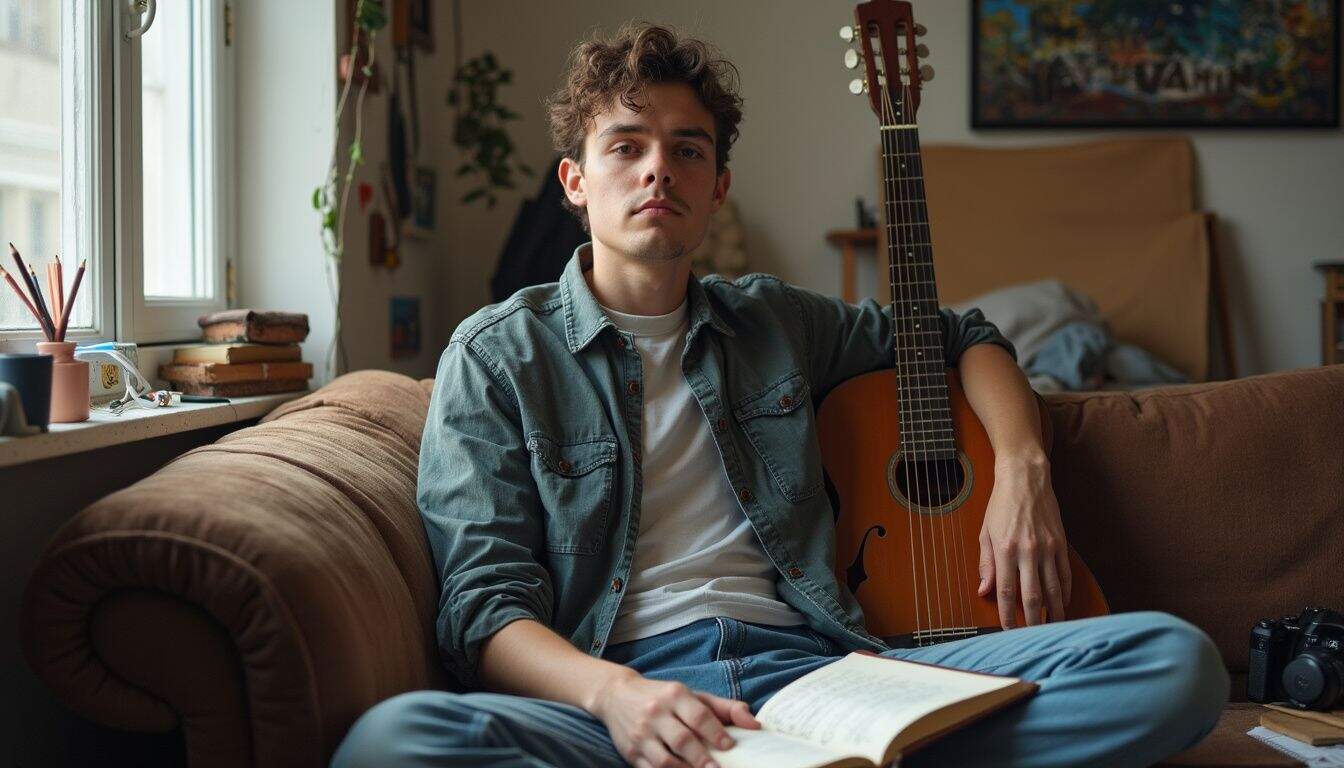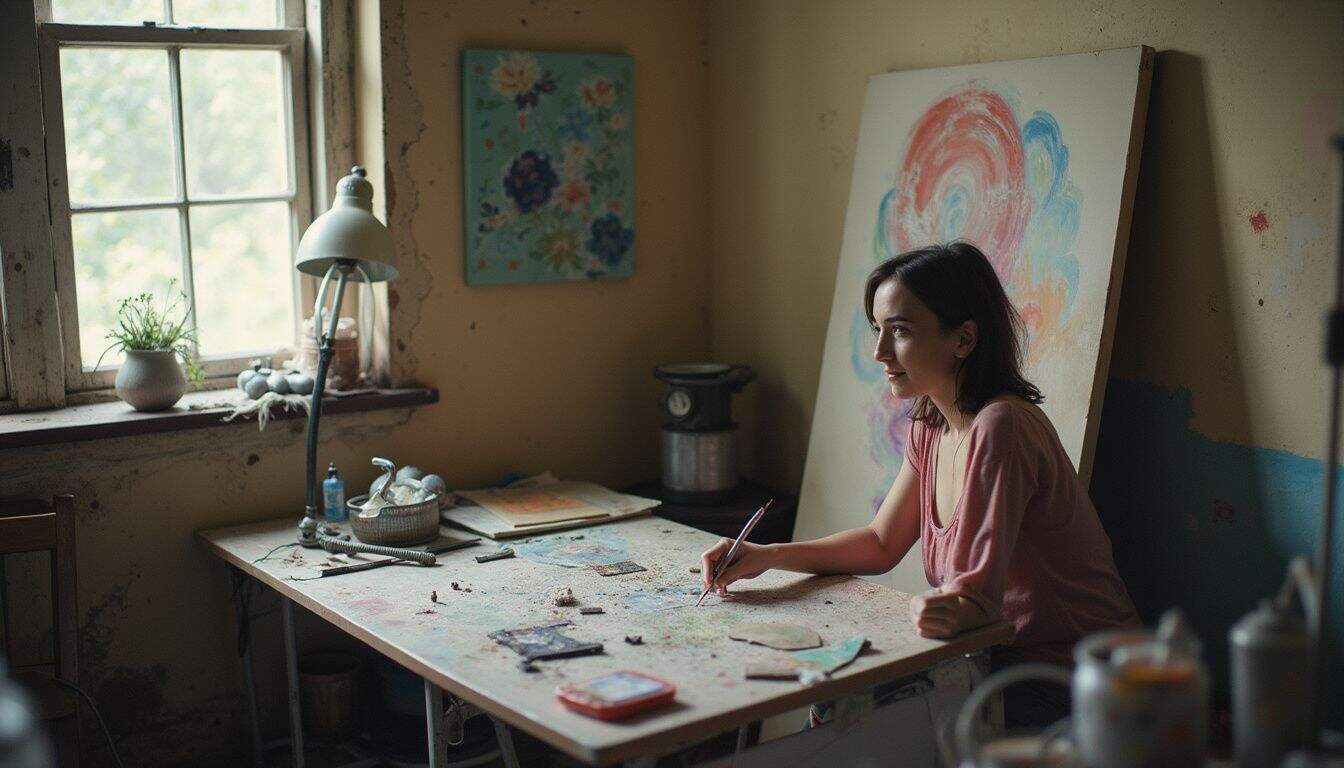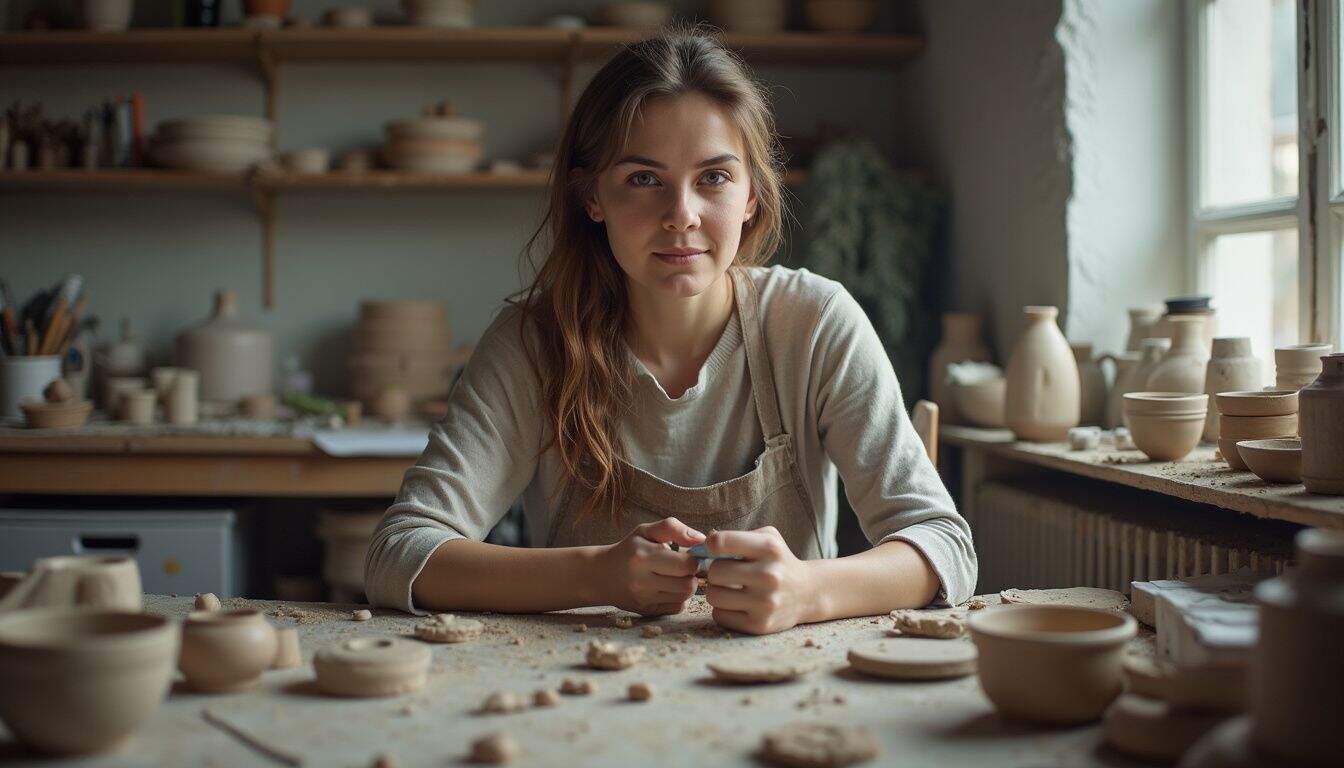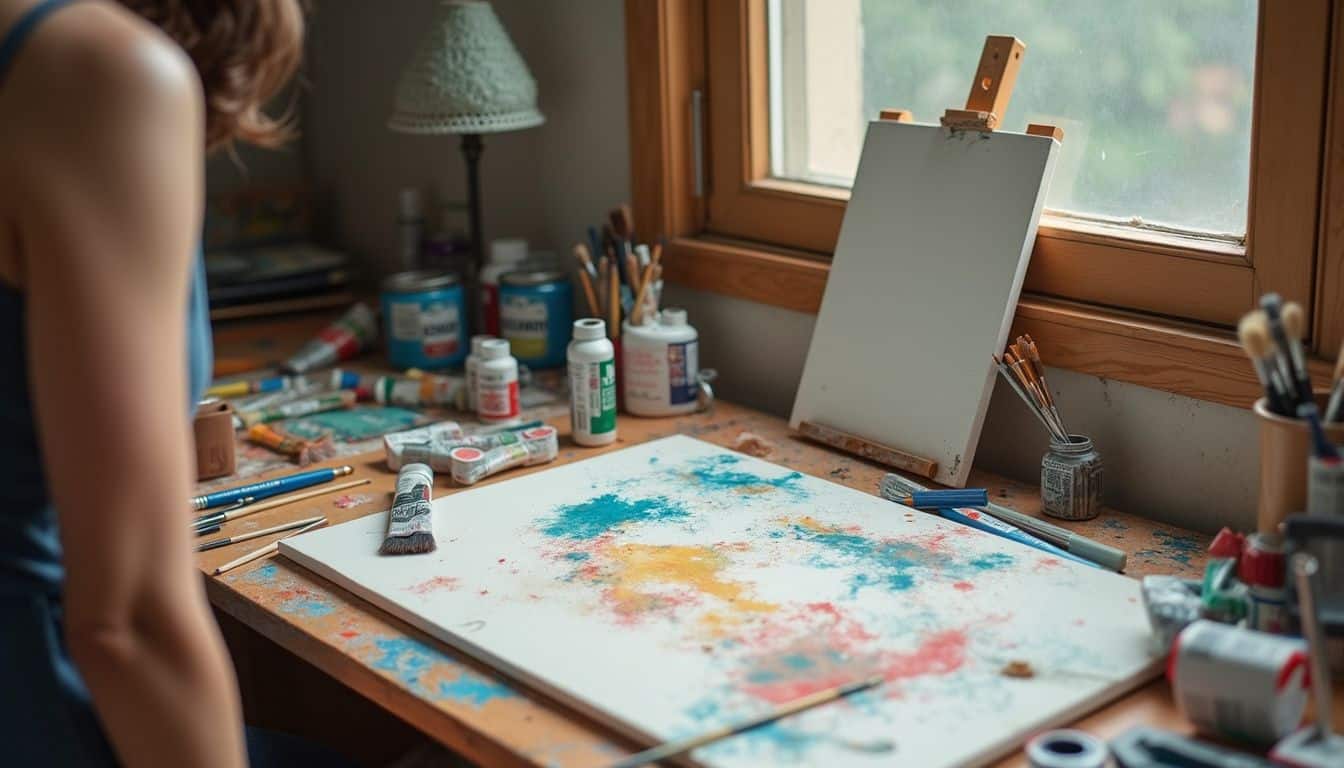Have you ever felt like you’re just going through the motions, stuck in a routine that feels a little… blah?
If you’re looking for a little more joy and meaning outside of your daily to-do list, you are in the right place.
It turns out that creative activities, like painting or snapping photos, are scientifically linked to a real boost in happiness and well-being. A major 2022 report from the World Health Organization confirmed that engaging with the arts has significant benefits for mental health.
So, let’s explore together how your “other hobby” can be the key to unlocking new passions and personal growth. I’ll walk you through everything you need to know to get started.
Key Takeaways
Science-Backed Joy Boost: A 2022 WHO report shows engaging in arts like painting or photography significantly enhances mental health and happiness by reducing stress hormones like cortisol.
Beginner-Friendly Entry: Start with what you have—your smartphone for photos, free online lessons for music, or a $25 watercolor set for painting—no fancy gear required.
Holistic Personal Growth: Creative pursuits build problem-solving skills, emotional resilience, and social connections, turning hobbies into tools for self-discovery and confidence.
2025 Trends: Expect a rise in “cozy” hands-on activities like pottery and knitting, fueled by affordable online platforms like Skillshare for mindful, screen-free fulfillment.
Table of Contents
Popular Creative Outlets to Try

You can pick up a camera or grab a guitar to see where your curiosity leads. Sometimes, even a simple sketchbook becomes the spark for new ideas and much-needed relaxation.
What are some beginner tips for photography?
Getting into photography is more about having a good eye than having expensive equipment. You can start creating beautiful images right away by focusing on a few simple ideas.
- Use the gear you have. You don’t need a fancy new camera. With over 93% of all photos now taken on smartphones, the camera in your pocket is more than powerful enough to get started. For editing on the go, free apps like Snapseed and Adobe Lightroom Mobile offer powerful tools.
- Keep your horizons straight. This is a simple trick that makes your photos look instantly more professional and balanced.
- Learn the “Exposure Triangle.” Understanding the basics of aperture, shutter speed, and ISO is key. This trio controls the brightness and sharpness of your photos, and mastering them is a huge step forward.
- Pay attention to light. The soft, gentle light of the morning or late afternoon is almost always more flattering than the harsh sun at midday. Try shooting with the light source coming from the side to create interesting shadows and depth.
- Always back up your files. Use the 3-2-1 rule: three copies of your photos, on two different types of media, with one copy stored off-site (like on a cloud service such as Google Photos or iCloud).
- Connect with others. Joining an online group, like the r/photographybeginners subreddit, is a great way to get feedback and learn from others who are on the same journey.
For more ideas on creative outlets to try, you can find inspiration everywhere.
How can I start playing a musical instrument?
Picking up an instrument for the first time can feel so exciting, and it’s never too late to start. Here’s how you can get going and actually enjoy the process.
- Start with a quality instrument. You don’t need to buy one right away. Renting is a fantastic, low-cost option. A local music shop might rent a student-model guitar or keyboard for just $25 to $50 a month, which is a great way to try it out without a big commitment.
- Use online resources. The internet is full of amazing free lessons. YouTube has thousands of tutorials, and apps like Yousician or Fender Play offer structured lessons that feel like a game.
- Set small, clear goals. Don’t aim to play a symphony in your first week. Instead, focus on learning three chords or playing one simple song. These small wins are huge for keeping your motivation up.
- Track your progress. Keep a simple journal or use a notes app like Google Keep to jot down what you practiced. Seeing how far you’ve come is incredibly rewarding.
- Warm up your hands. Just like any physical activity, a few simple finger stretches before you play can help prevent strain and improve your dexterity over time.
- Embrace mistakes. Every musician, even the pros, makes mistakes. They are a core part of learning and help your brain grow stronger and more adaptable.
What are easy painting and sketching techniques for beginners?
After focusing on sound, playing with colors can be a wonderful change of pace. Painting and sketching are incredibly forgiving and give your creative muscles a whole new kind of workout.
A beginner’s watercolor set from a trusted brand like Winsor & Newton can cost less than $25, making it one of the most accessible and affordable hobbies to start.
- Start with simple subjects. Don’t feel pressured to create a realistic portrait on your first try. Abstract shapes, simple landscapes, or flowers are perfect for practicing basic techniques without stress.
- Limit your color palette. Begin with just the primary colors (red, yellow, blue) plus white. This forces you to learn how colors mix and creates a naturally harmonious look.
- Sketch your design first. A light pencil sketch gives you a roadmap for your painting and helps ensure your composition feels balanced from the start.
- Learn a few brush strokes. Practice making different marks on a scrap piece of paper. Try dabbing, sweeping long lines, and stippling (making little dots) to see what textures you can create.
- Watch the pros. Find a YouTube artist whose style you love. Channels like Shayda Campbell offer gentle, step-by-step watercolor tutorials that are perfect for beginners.
- Join a community. Websites like DeviantArt or Reddit’s r/ArtFundamentals are welcoming places to share your work, ask for advice, and see what other new artists are creating.
How Creative Hobbies Enrich Our Lives

Dedicating time to painting a canvas or strumming a guitar does more than just fill an empty hour. These pursuits can truly lift your mood, spark new ways of thinking, and connect you with wonderful new friends.
How do creative hobbies improve emotional well-being?
Slowing down to focus on a creative project can feel like a mental reset button. As you get lost in the colors on a canvas or the melody of a song, the stress of the day just seems to melt away.
This isn’t just a feeling, it’s backed by science. The American Art Therapy Association confirms that making art can lower levels of cortisol, the body’s main stress hormone. One study found that these levels can drop significantly after just 45 minutes of creative activity.
Creative outlets give us a way to express feelings that can be hard to put into words. This process of self-expression builds confidence and a stronger sense of self.
Even better, when you share your art in a group class or online, you build powerful social bonds. A Harvard study highlighted that these creative communities boost happiness and overall life satisfaction, especially for women who participate regularly.
Can creative activities boost problem-solving skills?
Absolutely. When you’re learning to play the piano or figuring out how to mix the perfect shade of green, you’re doing more than just being creative. You are actively training your brain to be a better problem-solver.
Think about it, a musician has to adapt instantly if they play a wrong note. A painter needs to think on their feet if a color doesn’t look right on the canvas. Communications expert Carmine Gallo has noted that these kinds of artistic activities directly enhance cognitive function.
This mental workout builds something neuroscientists call cognitive adaptability. It’s your brain’s ability to be flexible, jump between different ideas, and find fresh solutions. This skill doesn’t just stay in your art studio, it helps you tackle challenges at work and in your personal life, too.
For more great ideas, you can find hobbies that boost problem-solving skills and challenge you in new ways.
In what ways do creative hobbies foster personal growth?
Creative hobbies are a direct path to self-discovery and personal development. They give you a safe space to experiment, fail, and try again without any judgment.
For many, a hobby provides much-needed stress relief and becomes a cornerstone of their mental health routine. Studies consistently show that people who regularly engage in creative pursuits report higher levels of fulfillment and overall well-being.
Sharing your creations, whether it’s a sketch on Instagram or a song on SoundCloud, helps you connect with a supportive community. It brings people together who share your passion. This sense of belonging is a powerful force for personal growth, reminding you that you’re not alone in your creative journey.
The freedom to simply create for the joy of it builds confidence that spills over into every other part of your life.
How Will Creative Hobbies Evolve in 2025?

In 2025, hands-on, tangible hobbies are taking center stage. People are looking for ways to disconnect from their screens and create something real with their own two hands.
We’re seeing a huge rise in what are being called “cozy hobbies.” Think pottery, knitting, and digital crafting with tools like a Cricut machine. According to a recent Etsy trend report, searches for “DIY craft kits” and “mindful crafts” are soaring, showing a clear shift towards hobbies that support mental wellness.
Online learning is making it easier than ever to jump in. You can now access expert-led workshops on platforms like Skillshare and Domestika for a fraction of the cost of in-person classes.
| Hobby Format | Average Cost | Key Benefit |
|---|---|---|
| In-Person Workshop (e.g., Pottery) | $50 – $80 per session | Hands-on guidance and local community |
| Online Platform (e.g., Skillshare) | Around $14/month (billed annually) | Unlimited access to thousands of classes |
More and more women are embracing creative expression as a vital part of a balanced life, swapping passive screen time for active, fulfilling creation.
People Also Ask
How can creative pursuits change my daily routine?
Creative hobbies introduce a “flow state” into your day, breaking up monotony and helping you approach problems differently. For instance, the focus required for pottery can make you a more patient problem-solver at work.
What are some ways creative activities improve mental health?
Engaging in creative activities like drawing or working with clay gives your mind a much-needed break from daily worries. A Drexel University study found that just 45 minutes of art-making can lower your cortisol levels, the body’s main stress hormone.
Can picking up another hobby really boost confidence?
Yes, every time you finish a project, from mastering a new recipe to completing a painting, you create a “mastery experience” for yourself. This provides tangible proof of your abilities and directly builds your self-confidence, one small success at a time.
Why do creative pursuits strengthen relationships?
Sharing a creative hobby, like taking a cooking class or joining a choir, strengthens bonds by creating positive, shared memories and fostering teamwork outside of everyday routines.
References
https://photographylife.com/photography-tips-for-beginners
https://icmp-elevate.com/music-hobby-your-guide-to-musical-hobbies (2024-11-29)
https://www.lemon8-app.com/@sqcreates/7241578286491681286?region=us
https://www.classpop.com/magazine/painting-techniques
https://www.youtube.com/watch?v=MwIhoJJQ5Go
https://www.lemon8-app.com/@haileybooher.com/7444945334188393003?region=us
https://www.classpop.com/magazine/creative-hobbies
https://www.theinteriordesigninstitute.com/uk/en/blog-11-creative-hobbies-to-try
